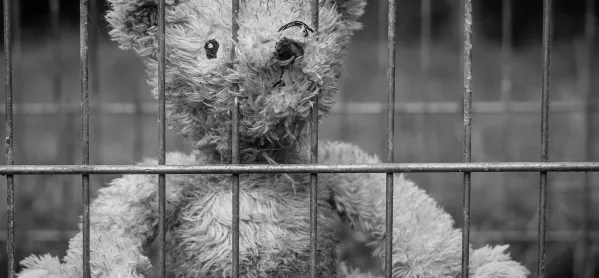- Home
- Commissioner calls time on seclusion in schools
Commissioner calls time on seclusion in schools

The use of restraint and seclusion on pupils across Scotland is largely unmonitored, with glaring inconsistencies across local authority areas, the first investigation undertaken by the children and young people’s commissioner Scotland has revealed.
The investigation - which is the subject of a six-page analysis in today’s Tes Scotland magazine - found the situation to be so chaotic that the commissioner has called for all schools to stop using seclusion, as a matter of urgency, until national guidelines and standards are in place.
It found that it was impossible to know “with any degree of certainty” how many incidents of restraint and seclusion were taking place in Scottish schools each year, which children were most affected, or how frequently or how seriously, because councils were failing to record the data.
Pupils suffer ‘physical and mental trauma’
Local authority policies and guidance on the issue, meanwhile, were found by the investigators to either be non-existent - as was the case in four councils - or contradictory, confusing and incomplete. Where guidance did exist, it “seldom” acknowledged the “physical and mental trauma” that children often experienced as a result of being shut in rooms or held down, said the report.
However, just because there was a lack of guidance, it did not mean seclusion and restraint were not happening, warned the report, which is published today.
Despite presenting no policy documents to the investigation, Aberdeen City Council, for instance, reported that 60 different techniques had been used to “physically intervene with children”.
In total, across the 18 authorities which recorded the data, the investigation found that 2,674 “physical interventions” had taken place during the course of the 2017-18 school year.
When both the number of children involved and the number of incidents were recorded - which was the case in just 13 councils - the investigation found that on average each child was being subjected to nearly six physical interventions a year.
The report, however, does not point the finger of blame at teachers. Rather it calls for better training and for the Scottish government to produce national policy and guidance on restraint and seclusion in schools.
Teachers ‘need training and support’
The report makes 21 recommendations in total, also calling for local authorities to record all incidents of restraint and seclusion and for Education Scotland and the Care Inspectorate to scrutinise the use of restraint and seclusion in schools as part of their inspection regimes.
The children’s commissioner, Bruce Adamson, described it as “shameful that teachers are being left to try and manage behaviours without adequate training and support”.
He said: “This is not an attack or criticism of individual teachers. We are saying Scottish government and local government need to support teachers to know what the guidelines are and set clear standards and give teachers the training and support they need. What we have across the education system at the moment is teachers under a lot of pressure and they are not getting the support they need to deliver on children’s human rights. It is important we make sure they are supported to stop using seclusion.”
The commissioner’s report on the investigation will be tabled in Parliament today, with the Scottish government and councils expected to respond by January.
Mr Adamson added: “Use of seclusion and isolation to manage behaviour in schoolchildren was a clear topic for the office’s first investigation but we were surprised by a complete lack of consistency across authorities. Some authorities record incidents, but have no guidelines; some have guidelines but cannot tell us how often they use the procedure.
“More worrying, there are no standards to identify what we mean by isolation and seclusion, yet we have heard from young people, their parents and carers how these are used as punishment, without an understanding of needs or care for individuals.
“Clear and consistent policies and procedures are urgently needed, along with clear examples of good practice.”
The report defines restraint as “holding a child or young person to restrict their movement”. It includes mechanical restraints like wheelchair straps.
Seclusion is defined as “the confinement of a child, without their consent, by shutting them alone in a room or other area which they are prevented from leaving”.
Seclusion is not the same as a “time out”, which is defined as a behavioural intervention used as part of a “structured behaviour support plan”, which does not necessarily involve being physically removed to a separate room or area.
A Scottish government spokeswoman said: “We are committed to ensuring the safety and wellbeing of all children and young people, with each council responsible for the care, safety and welfare of pupils in school.
“National guidance is clear that physical intervention, physical restraint and supported isolation should only ever be used as a last resort, when in the best interests of the child and never for disciplinary purposes. Every intervention should be carefully monitored and reviewed.
“We will fully consider the report recommendations.”
Keep reading for just £1 per month
You've reached your limit of free articles this month. Subscribe for £1 per month for three months and get:
- Unlimited access to all Tes magazine content
- Exclusive subscriber-only stories
- Award-winning email newsletters



